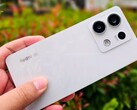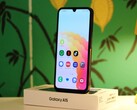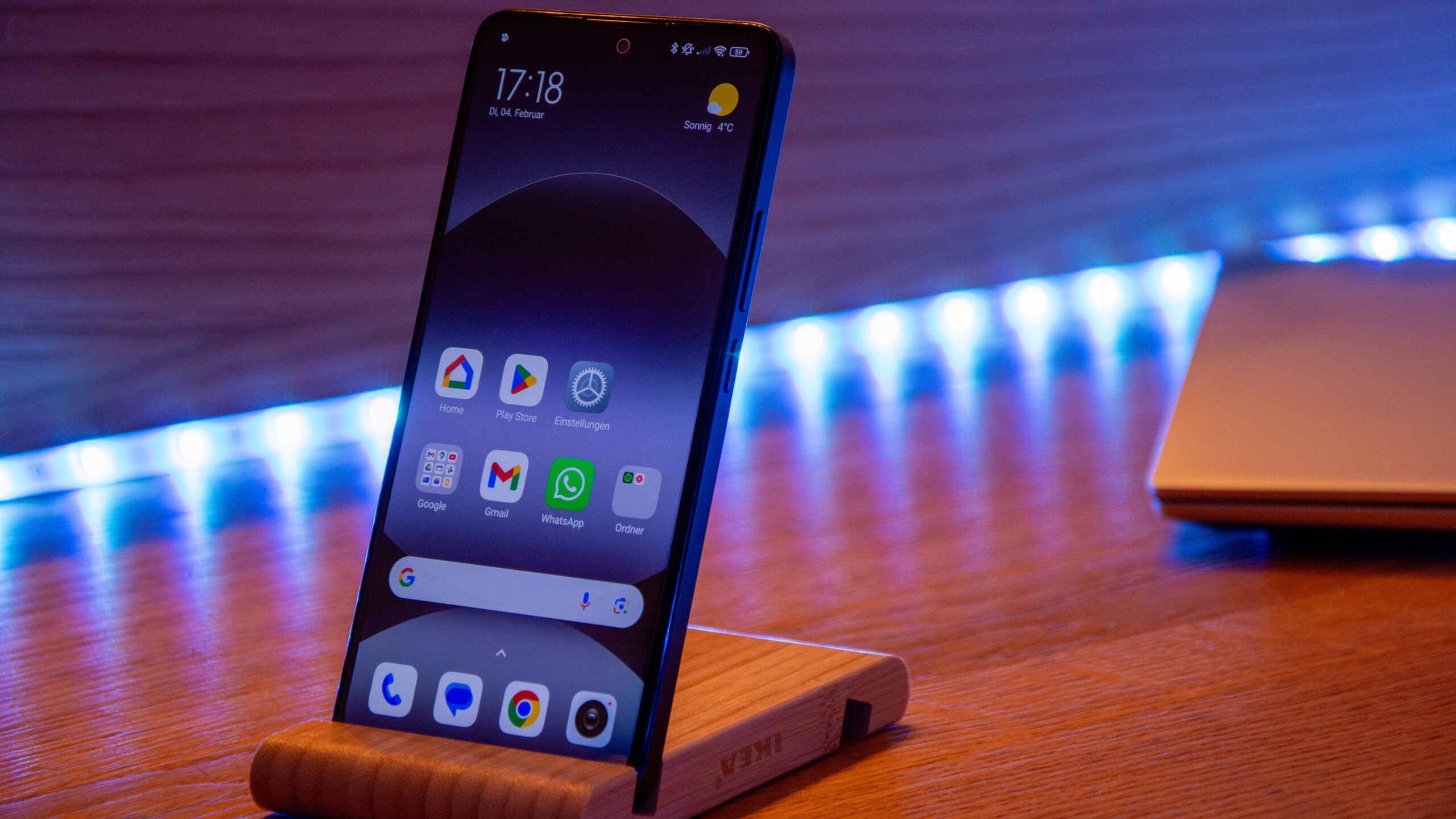
Xiaomi Redmi Note 14 LTE smartphone review - More power and stamina
An affordable marathon-runner.
Xiaomi is in the process of launching a whole Note 14 series. The cheapest Redmi Note 14 is said to impress with its AI camera and large battery. It also comes with a 120 Hz AMOLED display, stereo speakers, memory expansion and an audio jack connector - and all for $200. Our review reveals if anything is left to be desired.Benedikt Winkel, 👁 Daniel Schmidt (translated by Andrew Dickson) Published 🇩🇪 🇫🇷 ...
Redmi Note 14 LTE verdict - A strong overall package that lacks sparkle
Xiaomi does many things right with the Redmi Note 14 LTE. The smartphone performs better than its predecessor, and the AMOLED display is bright and displays accurate colors. There is also an IR blaster, an audio jack connector and expandable storage. However, the crowning glory is the very good battery life.
Despite this, the camera left us with mixed feelings. In good lighting conditions, the main camera delivers usable results. Low-light performance, zoom and video quality, on the other hand, are rather mediocre. The images from the front camera also fall short of expectations.
The brief drops in the Wi-Fi connection during testing were annoying, but hopefully, this can be fixed with an update. We would also like to see a crisper vibration motor, a higher quality audio jack connector and a real always-on display.
Pros
Cons
Price and availability
The Xiaomi Redmi Note 14 LTE's RRP is $200 for the smallest version, but an additional 2 GB of RAM will set you back an extra $30. The largest version comes with 8 GB RAM and 256 GB storage space and costs around $250.
However, at the time of this review, the prices in stores were already below the RRP.
Possible alternatives compared
Image | Model / Review | Price | Weight | Drive | Display |
|---|---|---|---|---|---|
| Xiaomi Redmi Note 14 LTE Mediatek Helio G99 ⎘ ARM Mali-G57 MP2 ⎘ 8 GB Memory, 256 GB UFS 2.1 | Amazon: 1. $192.70 Xiaomi Redmi Note 14 4G LTE ... 2. $191.00 Xiaomi Redmi Note 14 4G LTE ... 3. $4.99 Mr.Shield Screen Protector c... List Price: 250€ | 196 g | 256 GB UFS 2.2 Flash | 6.67" 2400x1080 395 PPI AMOLED | |
| Xiaomi Poco M6 Pro Mediatek Helio G99 ⎘ ARM Mali-G57 MP2 ⎘ 12 GB Memory, 512 GB UFS 2.1 | Amazon: List Price: 299€ | 181 g | 512 GB UFS 2.2 Flash | 6.67" 2400x1080 395 PPI AMOLED | |
| Samsung Galaxy A15 Mediatek Helio G99 ⎘ ARM Mali-G57 MP2 ⎘ 4 GB Memory, 128 GB UFS 2.1 | Amazon: 1. $3.99 Bencuku (2 Pack) Designed fo... 2. $185.72 Samsung Galaxy A15 5G 128GB,... 3. $6.99 Supershieldz (2 Pack) Design... List Price: 190€ | 200 g | 128 GB UFS 2.2 Flash | 6.50" 2340x1080 396 PPI Super AMOLED | |
| Motorola Moto G35 Unisoc T8100 (T760) ⎘ ARM Mali-G57 MP4 ⎘ 4 GB Memory, 128 GB UFS 2.1 | Amazon: 1. $136.00 Motorola Moto G35 Dual-SIM 1... 2. $4.99 Mr.Shield Screen Protector c... 3. $129.99 Motorola Moto G Power 5G | 2... List Price: 179€ | 188 g | 128 GB UFS 2.2 Flash | 6.72" 2400x1080 392 PPI IPS | |
| Xiaomi Redmi Note 13 4G Qualcomm Snapdragon 685 4G ⎘ Qualcomm Adreno 610 ⎘ 8 GB Memory, 128 GB UFS 2.1 | Amazon: 1. $179.90 Xiaomi Redmi Note 13 4G LTE ... 2. $240.00 Xiaomi Redmi Note 13 4G LTE ... 3. $9.49 for Xiaomi Redmi Note 13 4G ... List Price: 199€ | 188.5 g | 128 GB UFS 2.2 Flash | 6.67" 2400x1080 395 PPI AMOLED |
Table of Contents
- Redmi Note 14 LTE verdict - A strong overall package that lacks sparkle
- Specifications
- Case - The Redmi Note 14 comes with IP certification
- Features - Redmi offers an audio jack and microSD
- Software - HyperOS is on the Redmi Note 14
- Communication and GNSS - The Note 14 experiences small interruptions
- Telephone functions and voice quality - The Redmi Note 14 is somewhat tinny
- Cameras - Videos are not one of the Redmi Note 14's strengths
- Accessories and warranty - The Redmi Note 14 comes with a case and power adapter
- Input devices & operation - Quick unlocking with the Redmi Note 14
- Display - 120 Hz and AMOLED in the Redmi Note 14
- Performance - The Redmi Note 14 is class average
- Emissions - The Note 14 gets loud but stays cool
- Battery runtimes - The Redmi Note 14 has staying power
- Notebookcheck overall rating
With the Redmi 14, Xiaomi doesn't only offer a single smartphone but a whole series. In addition to the Note 14, there is a Note 14 Pro and a Note 14 Pro+. The Note 14 and Note 14 Pro are also available in 5G and LTE versions.
This review concerns the entry-level model, the Redmi Note 14 LTE. This device comes in differently specced variants. The basic smartphone packs 6 GB of RAM and 128 GB of storage space. There is also the option of 8 GB of RAM with 128 or 256 GB of storage.
Three colors are available: Lime Green, Midnight Black and Ocean Blue. Our review model is black and has the largest storage configuration.
Specifications
Case - The Redmi Note 14 comes with IP certification
Redmi uses a plastic back for its Note 14, and the frame is made of an aluminum alloy. The display is protected by Corning Gorilla Glass 5. There is even IP certification on board, albeit only IP54.
The build quality is impressive: gaps are small and even, and the smartphone is not only sturdy but is also difficult to bend even when force is applied. The frame and rear are matte and relatively resistant to fingerprints. Only the glass-like element around the three lenses is a real dust magnet.
Features - Redmi offers an audio jack and microSD
Xiaomi advertizes the Redmi Note 14 as having a 108 MPix camera, a 5500 mAh battery and a refresh rate of 120 Hz. The smartphone also offers features such as a 3.5 mm audio jack, NFC, an IR blaster and memory expansion via a microSD card in a hybrid slot.
The USB-C port only supports USB 2.0, but exFAT and NTFS are supported as file systems for external data storage devices. In our tests, we measured a transfer speed of 24.7 MB/s when paired with a Samsung 980 Pro SSD.
microSD Card Reader - Redmi expands up to 1 TB
The Redmi Note 14's internal storage can be expanded using a microSD card. The Redmi 14 can accommodate memory cards of up to 1 TB, and in our test, we used the AV PRO microSD 128 GB V60 as a reference card.
From three measurements, we achieved an average transfer speed of 24.7 MB/s. This puts the Note 14 on par with its predecessor. The Samsung Galaxy A15 proves that you can go significantly faster in this class, with a transfer speed that is almost twice as high.
| SD Card Reader - average JPG Copy Test (av. of 3 runs) | |
| Samsung Galaxy A15 (Angelbird V60) | |
| Motorola Moto G35 (Angelbird V60) | |
| Average of class Smartphone (5.72 - 58.9, n=68, last 2 years) | |
| Xiaomi Redmi Note 14 LTE (Angelbird AV Pro V60) | |
| Xiaomi Redmi Note 13 4G (Angelbird V60) | |
| Xiaomi Poco M6 Pro (Angelbird AV Pro V60) | |
Cross Platform Disk Test (CPDT)
Software - HyperOS is on the Redmi Note 14
The Redmi Note 14 comes with Android 14 and Xiaomi's HyperOS 1.0. At the time of reviewing, the security patch is from November 2024. There is no uniform update policy for the Note 14 series. Surprisingly, the cheapest Redmi Note 14 gets the longest support: The Redmi Note 14 will receive four years of OS updates and six years of security updates.
The HyperOS offers a variety of settings options. However, the device also comes with a ton of bloatware. In addition to numerous Xiaomi and Google apps, there is also software from Microsoft, game providers and third-party providers such as TikToc, Facebook, Alibaba, Booking and many more. With the exception of the Xiaomi apps, all programs can be easily deleted.
Sustainability - The Redmi Note 14 has a long shelflife
Xiaomi hasn't provided any information regarding the Redmi Note 14's carbon footprint. The device comes with packaging containing very little plastic, and the manufacturer advertizes the smartphone as being particularly durable. Xiaomi aims to achieve this through robust construction, using materials such as absorbent foam elements and reinforced corners.
Xiaomi promises a battery life of 4 years, which is said to be achieved through intelligent charging management.
Communication and GNSS - The Note 14 experiences small interruptions
The Xiaomi Redmi Note 14 only supports Wi-Fi 5. In our tests, it achieved transfer speeds that are typical for its class when paired with our reference router, an Asus ROG Rapture GT-AXE11000.
In the recorded measurements, the transmission was stable, and there were no drops. In everyday use, however, it is noticeable that the Redmi Note 14 often loses the Wi-Fi connection for a few seconds while other devices manage to remain connected to the network.
When it comes to mobile data, the device is unremarkable, but in our test, he transmission was stable. The cheapest model in the Note 14 series is not 5G-capable. In addition, the band coverage is relatively low, but all European-relevant bands are supported.
The Redmi Note 14 supports single-band GNSS connections. Indoors, the smartphone needs a few seconds to establish a connection. In outdoor areas, the satellite connection is much faster, and positioning is more accurate.
The fact that the Redmi Note 14 does not enjoy very precise orientation becomes clear in a comparison trip with a Garmin Venu 2 smartwatch. In this comparison, the Xiaomi device's measured distance was some 200 meters shorter. The routes are often not displayed correctly. Navigation in everyday life - for example, with Google Maps - is still straightforward with the Note 14.
Telephone functions and voice quality - The Redmi Note 14 is somewhat tinny
Xiaomi's Redmi Note 14 uses the Google telephone app. The software is uncluttered and poses no puzzles to the user. The quality of calls is fine, but the earpiece makes the other person's voice sound a bit tinny. Background noise could also be suppressed better, but interference is absent.
When making calls via the speaker, the device is loud enough.
Cameras - Videos are not one of the Redmi Note 14's strengths
Although Xiaomi has installed three lenses in the Redmi Note 14, only the 108 MPix main camera should really be taken seriously. The other two lenses have just 2 MPix each; one is intended for macro shots, and the other provides information on depth of field. The macro shots are very noisy and only work in very good lighting conditions. There is no ultra-wide-angle lens, and only digital zooming is available.
The quality of the main camera, on the other hand, is mostly impressive. The shots are sharp and processed quickly. By comparison, however, the colors are rather pale. The digital zoom is fine, but the dynamic range continues to decrease, and the subjects blur a little. If desired, photos can be taken at full resolution. There is also a Pro mode with which the white balance, focus, exposure time and ISO can be set manually.
The shots from the 20 MPix front camera lack sharpness. The images sometimes appear soft and washed out. The portrait mode, however, works reliably. The Redmi Note 14 records videos at a maximum resolution of 1080p and 60fps, while only 30fps is possible on the front.
The video quality is mediocre, and due to the lack of stabilization, a steady hand is required. Exposure correction and autofocus work quite well. However, in our test, even short videos showed image errors and stuttering in the recordings.


Accessories and warranty - The Redmi Note 14 comes with a case and power adapter
Fortunately, out of the box, the Redmi Note 14 comes with a well-applied screen protector. A case and a 33-watt charger are also included. In Germany, Xiaomi offers a 12-month guarantee with its Redmi Note 14.
Anyone who purchases the smartphone by February 11, 2025, will also receive a free repair or a defective display replacement from Xiaomi during the first six months of ownership - even if the phone owner is at fault.
Input devices & operation - Quick unlocking with the Redmi Note 14
The Redmi Note 14 has a flat display, meaning the applied screen protector does not interfere with inputs on the display edges and also did not come off during the test period. Inputs are reliably recognized in all areas of the display.
Out of the box, Xiaomi uses Gboard as its keyboard. This means that typing was reliable in our tests. Only the ERM vibration motor somewhat spoils the input experience. It works clearly and audibly, but the haptic feedback is spongy.
The unlocking made a positive impression. The Redmi Note 14 can be unlocked using 2D facial recognition or an in-display fingerprint reader. Both variants work quickly and reliably. However, the fingerprint reader is installed far too low in the display.
Display - 120 Hz and AMOLED in the Redmi Note 14
The Redmi Note 14 uses a 6.67-inch AMOLED panel. The maximum refresh rate is 120 Hz. The software takes care of the automatic adjustment ex-works. If desired, this value can also be set to either 60 or 120 Hz. According to the DRM information, there is only one further intermediate step at 90 Hz.
In our test, we measured a maximum brightness of 1,176 cd/m² with the ambient light sensor activated. This makes the panel a little brighter than that of its predecessor. Compared to similar devices, the Redmi Note 14 does well. In addition, the display is evenly illuminated. With our HDR measurement, we achieved the promised brightness of 1,800 cd/m² (APL18: 1,734 cd/m²).
Without the ambient light sensor, we achieved a brightness of 470 nits. During the measurements, we also noticed screen flickering at two different frequencies, one being OLED flickering and the other PWM, but with a high frequency of 980 Hz.
In the Xiaomi Redmi Note 14's settings, there is an "always-on-display" option. However, this is not a real always-on display. The display can be customized, but it switches off after a few minutes of inactivity.
| |||||||||||||||||||||||||
Brightness Distribution: 99 %
Center on Battery: 1164 cd/m²
Contrast: ∞:1 (Black: 0 cd/m²)
ΔE ColorChecker Calman: 1.3 | ∀{0.5-29.43 Ø4.79}
ΔE Greyscale Calman: 1.3 | ∀{0.09-98 Ø5}
99.9% sRGB (Calman 2D)
Gamma: 2.22
CCT: 6531 K
| Xiaomi Redmi Note 14 LTE AMOLED, 2400x1080, 6.7" | Xiaomi Poco M6 Pro AMOLED, 2400x1080, 6.7" | Samsung Galaxy A15 Super AMOLED, 2340x1080, 6.5" | Motorola Moto G35 IPS, 2400x1080, 6.7" | Xiaomi Redmi Note 13 4G AMOLED, 2400x1080, 6.7" | |
|---|---|---|---|---|---|
| Screen | 1% | -39% | -81% | -6% | |
| Brightness middle (cd/m²) | 1164 | 1016 -13% | 731 -37% | 1069 -8% | 940 -19% |
| Brightness (cd/m²) | 1169 | 1016 -13% | 711 -39% | 976 -17% | 922 -21% |
| Brightness Distribution (%) | 99 | 94 -5% | 93 -6% | 88 -11% | 96 -3% |
| Black Level * (cd/m²) | 0.7 | ||||
| Colorchecker dE 2000 * | 1.3 | 1.1 15% | 2.31 -78% | 3.32 -155% | 1.2 8% |
| Colorchecker dE 2000 max. * | 2.5 | 1.9 24% | 3.51 -40% | 5.48 -119% | 2.28 9% |
| Greyscale dE 2000 * | 1.3 | 1.3 -0% | 1.7 -31% | 3.6 -177% | 1.4 -8% |
| Gamma | 2.22 99% | 2.28 96% | 2.091 105% | 2.167 102% | 2.27 97% |
| CCT | 6531 100% | 6420 101% | 6424 101% | 6141 106% | 6503 100% |
| Contrast (:1) | 1527 |
* ... smaller is better
Screen Flickering / PWM (Pulse-Width Modulation)
| Screen flickering / PWM detected | 120 Hz Amplitude: 14.71 % Secondary Frequency: 980 Hz | ||
The display backlight flickers at 120 Hz (worst case, e.g., utilizing PWM) . The frequency of 120 Hz is very low, so the flickering may cause eyestrain and headaches after extended use. In comparison: 53 % of all tested devices do not use PWM to dim the display. If PWM was detected, an average of 8152 (minimum: 5 - maximum: 343500) Hz was measured. | |||
A series of measurement with fixed zoom levels and different brightness settings (The amplitude curve at minimum brightness looks flat, but this is due to the scaling. The enlarged version of the amplitude at minimum brightness can be seen in the info box.)
The Note 14 display's color balance is well implemented. In addition, the smartphone covers the sRGB color space to 99.9 percent in Calman 2D measurements. The display's color reproduction can be customized in the settings.
Display Response Times
| ↔ Response Time Black to White | ||
|---|---|---|
| 1.47 ms ... rise ↗ and fall ↘ combined | ↗ 0.782 ms rise | |
| ↘ 0.6875 ms fall | ||
| The screen shows very fast response rates in our tests and should be very well suited for fast-paced gaming. In comparison, all tested devices range from 0.1 (minimum) to 240 (maximum) ms. » 7 % of all devices are better. This means that the measured response time is better than the average of all tested devices (20.3 ms). | ||
| ↔ Response Time 50% Grey to 80% Grey | ||
| 1.98 ms ... rise ↗ and fall ↘ combined | ↗ 1.032 ms rise | |
| ↘ 0.9475 ms fall | ||
| The screen shows very fast response rates in our tests and should be very well suited for fast-paced gaming. In comparison, all tested devices range from 0.165 (minimum) to 636 (maximum) ms. » 8 % of all devices are better. This means that the measured response time is better than the average of all tested devices (31.7 ms). | ||
Performance - The Redmi Note 14 is class average
Xiaomi no longer uses a Snapdragon CPU for its Redmi Note 14 but a MediaTek Helio G99. As the benchmark measurements show, this is a significant upgrade over the Snapdragon 685 4G found in the Redmi Note 13.
The chip might not be new, but it is also installed in other devices in this segment, such as the Poco M6 Pro or the Samsung Galaxy A15, which have both been on the market for some time now. As you would expect, these devices perform similarly to one another.
In everyday use, the Redmi Note 14 usually runs smoothly. However, with more demanding apps or many tasks running in parallel, stutters are present.
| UL Procyon AI Inference for Android - Overall Score NNAPI | |
| Average of class Smartphone (3769 - 81594, n=137, last 2 years) | |
| Xiaomi Redmi Note 14 LTE | |
| Xiaomi Poco M6 Pro | |
| Average Mediatek Helio G99 (6323 - 9695, n=13) | |
| Samsung Galaxy A15 | |
| Xiaomi Redmi Note 13 4G | |
| AImark - Score v3.x | |
| Average of class Smartphone (82 - 307528, n=126, last 2 years) | |
| Samsung Galaxy A15 | |
| Average Mediatek Helio G99 (842 - 1001, n=10) | |
| Xiaomi Redmi Note 14 LTE | |
| Xiaomi Redmi Note 13 4G | |
| Geekbench AI | |
| Single Precision TensorFlow NNAPI 1.1 | |
| Average of class Smartphone (122 - 4122, n=41, last 2 years) | |
| Motorola Moto G35 | |
| Half Precision TensorFlow NNAPI 1.1 | |
| Average of class Smartphone (122 - 32120, n=41, last 2 years) | |
| Motorola Moto G35 | |
| Quantized TensorFlow NNAPI 1.1 | |
| Average of class Smartphone (118 - 44381, n=41, last 2 years) | |
| Motorola Moto G35 | |
| AI Benchmark - Score V6 | |
| Average of class Smartphone (55.6 - 22149, n=71, last 2 years) | |
| Average Mediatek Helio G99 (68.9 - 204, n=3) | |
| Xiaomi Redmi Note 14 LTE | |
For its Redmi Note 14's graphics chip, Xiaomi uses a Mali-G57 MP2, and this is the same one put to use in the Poco M6 Pro and the Samsung Galaxy A15 4G. As expected, the results in the benchmarks are, therefore, very similar. However, the Motorola Moto G35 sets itself apart with its Mali-G57 MP4.
The graphics performance is sufficient to play even demanding games like PUBG Mobile quite smoothly in HD.
There are no surprises in the browser benchmarks and memory measurements. The Redmi Note 14's scores are class-typical, performing slightly better than its predecessor.
GFXBench (DX / GLBenchmark) 2.7: T-Rex Onscreen | 1920x1080 T-Rex Offscreen
GFXBench 3.0: on screen Manhattan Onscreen OGL | 1920x1080 1080p Manhattan Offscreen
GFXBench 3.1: on screen Manhattan ES 3.1 Onscreen | 1920x1080 Manhattan ES 3.1 Offscreen
GFXBench: on screen Car Chase Onscreen | 1920x1080 Car Chase Offscreen | on screen Aztec Ruins High Tier Onscreen | 2560x1440 Aztec Ruins High Tier Offscreen | on screen Aztec Ruins Normal Tier Onscreen | 1920x1080 Aztec Ruins Normal Tier Offscreen | 3840x2160 4K Aztec Ruins High Tier Offscreen
| 3DMark / Wild Life Extreme Unlimited | |
| Motorola Moto G35 | |
| Xiaomi Poco M6 Pro | |
| Xiaomi Redmi Note 14 LTE | |
| Samsung Galaxy A15 | |
| Xiaomi Redmi Note 13 4G | |
| 3DMark / Wild Life Extreme | |
| Motorola Moto G35 | |
| Xiaomi Poco M6 Pro | |
| Xiaomi Redmi Note 14 LTE | |
| Samsung Galaxy A15 | |
| Xiaomi Redmi Note 13 4G | |
| 3DMark / Wild Life Unlimited Score | |
| Motorola Moto G35 | |
| Xiaomi Poco M6 Pro | |
| Xiaomi Redmi Note 14 LTE | |
| Samsung Galaxy A15 | |
| Xiaomi Redmi Note 13 4G | |
| 3DMark / Wild Life Score | |
| Motorola Moto G35 | |
| Xiaomi Poco M6 Pro | |
| Xiaomi Redmi Note 14 LTE | |
| Samsung Galaxy A15 | |
| Xiaomi Redmi Note 13 4G | |
| 3DMark / Steel Nomad Light Unlimited Score | |
| Xiaomi Redmi Note 14 LTE | |
| Xiaomi Redmi Note 14 LTE | |
| 3DMark / Steel Nomad Light Score | |
| Xiaomi Redmi Note 14 LTE | |
| 3DMark / Sling Shot Extreme (ES 3.1) Unlimited Physics | |
| Motorola Moto G35 | |
| Xiaomi Poco M6 Pro | |
| Xiaomi Redmi Note 14 LTE | |
| Samsung Galaxy A15 | |
| Xiaomi Redmi Note 13 4G | |
| 3DMark / Sling Shot Extreme (ES 3.1) Unlimited Graphics | |
| Motorola Moto G35 | |
| Xiaomi Poco M6 Pro | |
| Xiaomi Redmi Note 14 LTE | |
| Samsung Galaxy A15 | |
| Xiaomi Redmi Note 13 4G | |
| 3DMark / Sling Shot Extreme (ES 3.1) Unlimited | |
| Motorola Moto G35 | |
| Xiaomi Poco M6 Pro | |
| Xiaomi Redmi Note 14 LTE | |
| Samsung Galaxy A15 | |
| Xiaomi Redmi Note 13 4G | |
| GFXBench (DX / GLBenchmark) 2.7 / T-Rex Onscreen | |
| Xiaomi Poco M6 Pro | |
| Samsung Galaxy A15 | |
| Xiaomi Redmi Note 14 LTE | |
| Xiaomi Redmi Note 13 4G | |
| GFXBench (DX / GLBenchmark) 2.7 / T-Rex Offscreen | |
| Xiaomi Poco M6 Pro | |
| Samsung Galaxy A15 | |
| Xiaomi Redmi Note 14 LTE | |
| Xiaomi Redmi Note 13 4G | |
| GFXBench 3.0 / Manhattan Onscreen OGL | |
| Xiaomi Poco M6 Pro | |
| Samsung Galaxy A15 | |
| Xiaomi Redmi Note 14 LTE | |
| Xiaomi Redmi Note 13 4G | |
| GFXBench 3.0 / 1080p Manhattan Offscreen | |
| Xiaomi Poco M6 Pro | |
| Samsung Galaxy A15 | |
| Xiaomi Redmi Note 14 LTE | |
| Xiaomi Redmi Note 13 4G | |
| GFXBench 3.1 / Manhattan ES 3.1 Onscreen | |
| Xiaomi Redmi Note 14 LTE | |
| Xiaomi Poco M6 Pro | |
| Samsung Galaxy A15 | |
| Xiaomi Redmi Note 13 4G | |
| GFXBench 3.1 / Manhattan ES 3.1 Offscreen | |
| Xiaomi Poco M6 Pro | |
| Samsung Galaxy A15 | |
| Xiaomi Redmi Note 14 LTE | |
| Xiaomi Redmi Note 13 4G | |
| GFXBench / Car Chase Onscreen | |
| Xiaomi Poco M6 Pro | |
| Xiaomi Redmi Note 14 LTE | |
| Samsung Galaxy A15 | |
| Xiaomi Redmi Note 13 4G | |
| GFXBench / Car Chase Offscreen | |
| Xiaomi Redmi Note 14 LTE | |
| Xiaomi Poco M6 Pro | |
| Samsung Galaxy A15 | |
| Xiaomi Redmi Note 13 4G | |
| GFXBench / Aztec Ruins High Tier Onscreen | |
| Motorola Moto G35 | |
| Samsung Galaxy A15 | |
| Xiaomi Redmi Note 14 LTE | |
| Xiaomi Poco M6 Pro | |
| Xiaomi Redmi Note 13 4G | |
| GFXBench / Aztec Ruins High Tier Offscreen | |
| Motorola Moto G35 | |
| Samsung Galaxy A15 | |
| Xiaomi Redmi Note 14 LTE | |
| Xiaomi Poco M6 Pro | |
| Xiaomi Redmi Note 13 4G | |
| GFXBench / Aztec Ruins Normal Tier Onscreen | |
| Motorola Moto G35 | |
| Samsung Galaxy A15 | |
| Xiaomi Poco M6 Pro | |
| Xiaomi Redmi Note 14 LTE | |
| Xiaomi Redmi Note 13 4G | |
| GFXBench / Aztec Ruins Normal Tier Offscreen | |
| Motorola Moto G35 | |
| Samsung Galaxy A15 | |
| Xiaomi Poco M6 Pro | |
| Xiaomi Redmi Note 14 LTE | |
| Xiaomi Redmi Note 13 4G | |
| GFXBench / 4K Aztec Ruins High Tier Offscreen | |
| Motorola Moto G35 | |
| Samsung Galaxy A15 | |
| Xiaomi Poco M6 Pro | |
| Xiaomi Redmi Note 14 LTE | |
| Xiaomi Redmi Note 13 4G | |
| Jetstream 2 - 2.0 Total Score | |
| Average of class Smartphone (23.8 - 387, n=153, last 2 years) | |
| Xiaomi Redmi Note 14 LTE (chrome 132) | |
| Samsung Galaxy A15 (Chrome 122) | |
| Xiaomi Poco M6 Pro (chrome 122) | |
| Average Mediatek Helio G99 (46.9 - 90.3, n=13) | |
| Xiaomi Redmi Note 13 4G (Chrome 120) | |
| Speedometer 2.0 - Result 2.0 | |
| Average of class Smartphone (15.2 - 643, n=129, last 2 years) | |
| Xiaomi Redmi Note 14 LTE (chrome 132) | |
| Xiaomi Poco M6 Pro (chrome 122) | |
| Average Mediatek Helio G99 (24.1 - 90.1, n=12) | |
| Samsung Galaxy A15 (Chrome 122) | |
| Xiaomi Redmi Note 13 4G (Chrome 120) | |
| WebXPRT 4 - Overall | |
| Average of class Smartphone (27 - 306, n=147, last 2 years) | |
| Xiaomi Redmi Note 14 LTE (Chrome 132) | |
| Xiaomi Poco M6 Pro (Chrome 122) | |
| Samsung Galaxy A15 (Chrome 122) | |
| Average Mediatek Helio G99 (39 - 89, n=13) | |
| Xiaomi Redmi Note 13 4G (Chrome 120) | |
| Octane V2 - Total Score | |
| Average of class Smartphone (2228 - 121337, n=200, last 2 years) | |
| Motorola Moto G35 (Chrome 128) | |
| Xiaomi Redmi Note 14 LTE (chrome 132) | |
| Xiaomi Poco M6 Pro (chrome 122) | |
| Average Mediatek Helio G99 (17228 - 26476, n=24) | |
| Samsung Galaxy A15 (Chrome 122) | |
| Xiaomi Redmi Note 13 4G (Chrome 120) | |
| Mozilla Kraken 1.1 - Total | |
| Xiaomi Redmi Note 13 4G (Chrome 120) | |
| Samsung Galaxy A15 (Chrome 122) | |
| Average Mediatek Helio G99 (1600 - 2444, n=13) | |
| Xiaomi Poco M6 Pro (chrome 122) | |
| Xiaomi Redmi Note 14 LTE (chrome 132) | |
| Average of class Smartphone (257 - 28190, n=155, last 2 years) | |
* ... smaller is better
| Xiaomi Redmi Note 14 LTE | Xiaomi Poco M6 Pro | Samsung Galaxy A15 | Motorola Moto G35 | Xiaomi Redmi Note 13 4G | Average 256 GB UFS 2.2 Flash | Average of class Smartphone | |
|---|---|---|---|---|---|---|---|
| AndroBench 3-5 | 8% | -5% | 22% | -10% | 2% | 88% | |
| Sequential Read 256KB (MB/s) | 980.55 | 973.53 -1% | 967.8 -1% | 989.3 1% | 909.8 -7% | 901 ? -8% | 2222 ? 127% |
| Sequential Write 256KB (MB/s) | 835.49 | 910.9 9% | 488.5 -42% | 860.3 3% | 606.3 -27% | 723 ? -13% | 1838 ? 120% |
| Random Read 4KB (MB/s) | 202.22 | 236.72 17% | 233.2 15% | 272.1 35% | 177.1 -12% | 228 ? 13% | 295 ? 46% |
| Random Write 4KB (MB/s) | 213.23 | 228.61 7% | 229.6 8% | 318.9 50% | 228 7% | 249 ? 17% | 336 ? 58% |
Emissions - The Note 14 gets loud but stays cool
Temperature - The Note 14 isn't hot-headed
In everyday life, the Redmi Note 14's temperatures always remain low. Even when gaming, the device barely heats up. Under extreme load - in the Burnout benchmark - we reached a maximum temperature of 38.2 degrees Celsius on the upper side of the device.
(+) The maximum temperature on the upper side is 38.2 °C / 101 F, compared to the average of 35.2 °C / 95 F, ranging from 21.9 to 247 °C for the class Smartphone.
(+) The bottom heats up to a maximum of 34.4 °C / 94 F, compared to the average of 34 °C / 93 F
(+) In idle usage, the average temperature for the upper side is 26.1 °C / 79 F, compared to the device average of 32.9 °C / 91 F.
3DMark Steel Nomad Stress Test
| 3DMark | |
| Wild Life Stress Test Stability | |
| Xiaomi Poco M6 Pro | |
| Xiaomi Redmi Note 14 LTE | |
| Samsung Galaxy A15 | |
| Xiaomi Redmi Note 13 4G | |
| Motorola Moto G35 | |
| Wild Life Extreme Stress Test | |
| Xiaomi Poco M6 Pro | |
| Xiaomi Redmi Note 13 4G | |
| Motorola Moto G35 | |
| Xiaomi Redmi Note 14 LTE | |
| Samsung Galaxy A15 | |
| Steel Nomad Light Stress Test Stability | |
| Xiaomi Redmi Note 14 LTE | |
Speakers - The Redmi is significantly better than the predecessor
The Xiaomi Radmi Note 14 has stereo speakers with the sound being emitted both to the front via the earpiece and upward, at the top of the phone. Even at full volume, no vibrations are present either on the frame or the rear.
Compared to its predecessor, the maximum volume has increased significantly. The mids are also nice and linear. However, even for a smartphone, there is a complete lack of bass and low frequencies. Xiaomi has fitted its Redmi Note 14 with a 3.5 mm audio jack connector. This has a signal-to-noise ratio of 77.25 dBFS, which is decent but not good.
In our tests, the smartphone connected easily to various Bluetooth headphones. The following standards are supported: SBC, AAC, aptX, aptX HD, LDAC, aptX Adaptive, aptX TWS+, LHDC V1/V2/V3/V4/V5.
Xiaomi Redmi Note 14 LTE audio analysis
(+) | speakers can play relatively loud (90.7 dB)
Bass 100 - 315 Hz
(-) | nearly no bass - on average 28.1% lower than median
(+) | bass is linear (5.5% delta to prev. frequency)
Mids 400 - 2000 Hz
(±) | reduced mids - on average 6.9% lower than median
(+) | mids are linear (5.7% delta to prev. frequency)
Highs 2 - 16 kHz
(±) | higher highs - on average 6.6% higher than median
(+) | highs are linear (3.5% delta to prev. frequency)
Overall 100 - 16.000 Hz
(±) | linearity of overall sound is average (20.2% difference to median)
Compared to same class
» 32% of all tested devices in this class were better, 9% similar, 59% worse
» The best had a delta of 11%, average was 35%, worst was 134%
Compared to all devices tested
» 51% of all tested devices were better, 8% similar, 40% worse
» The best had a delta of 4%, average was 24%, worst was 134%
Xiaomi Redmi Note 13 4G audio analysis
(±) | speaker loudness is average but good (76.2 dB)
Bass 100 - 315 Hz
(-) | nearly no bass - on average 23.1% lower than median
(±) | linearity of bass is average (8% delta to prev. frequency)
Mids 400 - 2000 Hz
(±) | higher mids - on average 6.2% higher than median
(±) | linearity of mids is average (7.3% delta to prev. frequency)
Highs 2 - 16 kHz
(±) | higher highs - on average 5.2% higher than median
(±) | linearity of highs is average (10.9% delta to prev. frequency)
Overall 100 - 16.000 Hz
(±) | linearity of overall sound is average (22.5% difference to median)
Compared to same class
» 47% of all tested devices in this class were better, 6% similar, 46% worse
» The best had a delta of 11%, average was 35%, worst was 134%
Compared to all devices tested
» 65% of all tested devices were better, 6% similar, 29% worse
» The best had a delta of 4%, average was 24%, worst was 134%
Battery runtimes - The Redmi Note 14 has staying power
Power consumption
In its Redmi Note 14, Xiaomi has tuned the MediaTek Helio G99 differently compared to the Poco M6 Pro. Under load, the Redmi's power consumption is lower. The Redmi Note 14 is also more economical than the previous year's Note 13.
| Off / Standby | |
| Idle | |
| Load |
|
Key:
min: | |
| Xiaomi Redmi Note 14 LTE 5500 mAh | Xiaomi Poco M6 Pro 5000 mAh | Samsung Galaxy A15 5000 mAh | Xiaomi Redmi Note 13 4G 5000 mAh | Average Mediatek Helio G99 | Average of class Smartphone | |
|---|---|---|---|---|---|---|
| Power Consumption | -21% | 3% | -12% | -65% | -45% | |
| Idle Minimum * (Watt) | 1.05 | 1 5% | 1.1 -5% | 1.1 -5% | 1.552 ? -48% | 0.847 ? 19% |
| Idle Average * (Watt) | 1.27 | 1.19 6% | 1.2 6% | 1.3 -2% | 2.29 ? -80% | 1.431 ? -13% |
| Idle Maximum * (Watt) | 1.31 | 1.33 -2% | 1.5 -15% | 1.5 -15% | 2.57 ? -96% | 1.61 ? -23% |
| Load Average * (Watt) | 3.12 | 6.27 -101% | 2.9 7% | 3.6 -15% | 5.44 ? -74% | 7.09 ? -127% |
| Load Maximum * (Watt) | 6.24 | 7.19 -15% | 4.8 23% | 7.8 -25% | 7.81 ? -25% | 11.2 ? -79% |
* ... smaller is better
Power consumption: Geekbench (150 cd/m²)
Power consumption: GFXbench (150 cd/m²)
Battery life - The Redmi Note 14 is a long distance runner
With the Redmi Note 14, Xiaomi has combined an economical processor with an AMOLED display and a large 5,500 mAh battery. Overall, we achieved very good runtimes. In our practical Wi-Fi internet surfing test, the Redmi Note 14 kept going for over 17.5 hours before it had to be recharged.
In everyday life, two days of use are not a problem. Even when gaming, the smartphone easily lasts a day without recharging. With the included 33-watt power adapter, the Redmi Note 14 can be charged from 10 to 60 percent in 35 minutes and from 10 to 90 percent in 60 minutes.
| Battery runtime - WiFi v1.3 | |
| Xiaomi Redmi Note 14 LTE | |
| Xiaomi Poco M6 Pro | |
| Samsung Galaxy A15 | |
| Motorola Moto G35 | |
| Xiaomi Redmi Note 13 4G | |
Notebookcheck overall rating
The Xiaomi Redmi Note 14 is good but not a high-flyer in its class. The performance is better than its predecessor and now also competitive. However, the Note 14 is still not really a high-performing device. The Redmi smartphone doesn't make any mistakes, but, except for the battery life, it also lacks a bit of shine.
The Redmi Note 14 is a coherent overall package. Features, workmanship, and the included extras are impressive, especially concerning the price. For more demanding customers, the manufacturer also offers the Note 14 5G, Note 14 Pro, Note 14 Pro 5G and Note 14 Pro+ 5G.
Xiaomi Redmi Note 14 LTE
- 02/10/2025 v8
Benedikt Winkel
Transparency
The selection of devices to be reviewed is made by our editorial team. The test sample was given to the author by the manufacturer free of charge for the purposes of review. There was no third-party influence on this review, nor did the manufacturer receive a copy of this review before publication. There was no obligation to publish this review. As an independent media company, Notebookcheck is not subjected to the authority of manufacturers, retailers or publishers.
This is how Notebookcheck is testing
Every year, Notebookcheck independently reviews hundreds of laptops and smartphones using standardized procedures to ensure that all results are comparable. We have continuously developed our test methods for around 20 years and set industry standards in the process. In our test labs, high-quality measuring equipment is utilized by experienced technicians and editors. These tests involve a multi-stage validation process. Our complex rating system is based on hundreds of well-founded measurements and benchmarks, which maintains objectivity. Further information on our test methods can be found here.









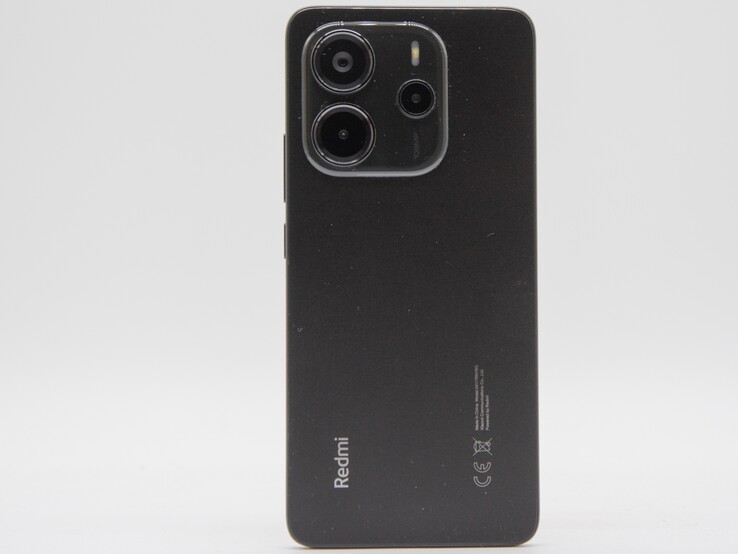








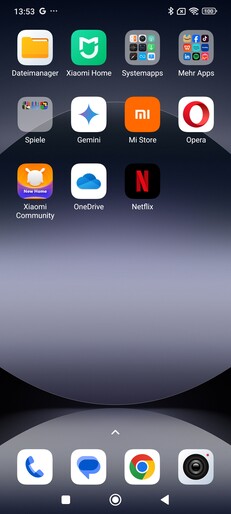
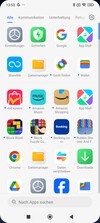
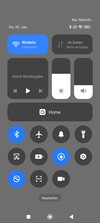
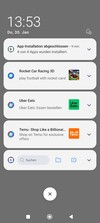
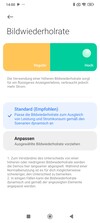
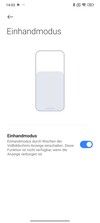
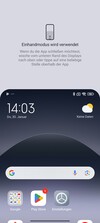
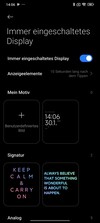
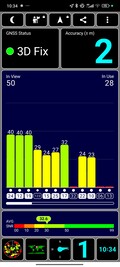
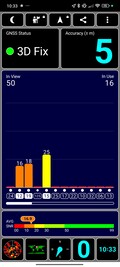







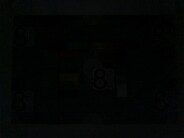

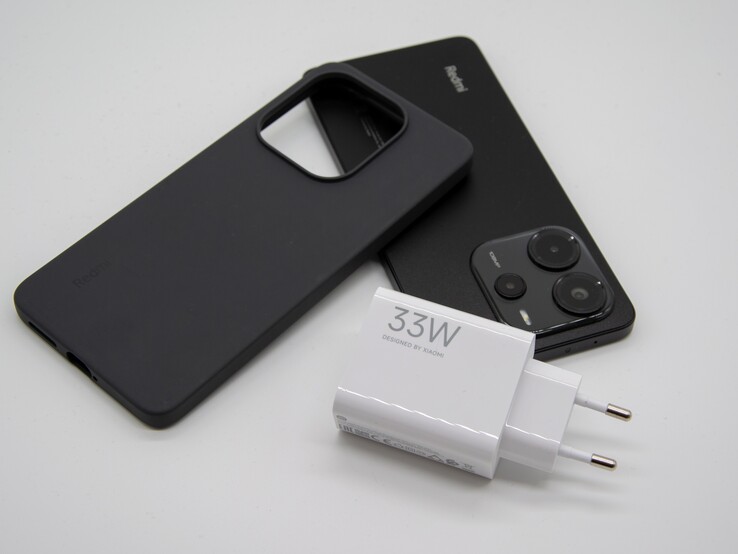
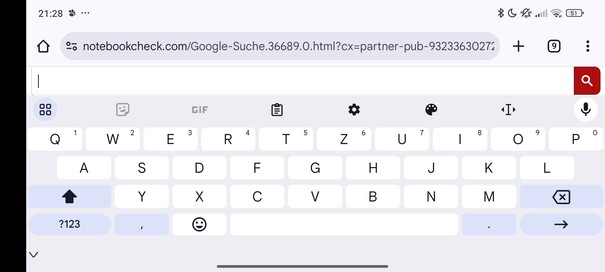
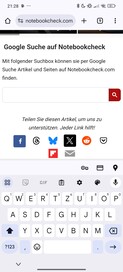
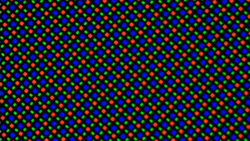
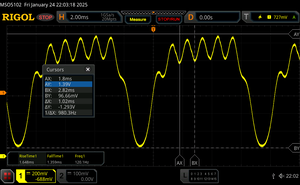





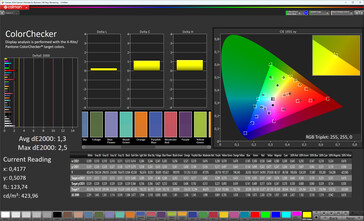
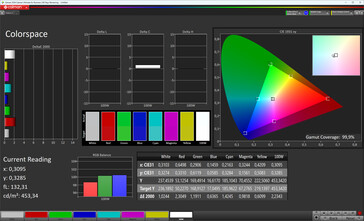


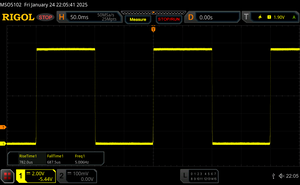
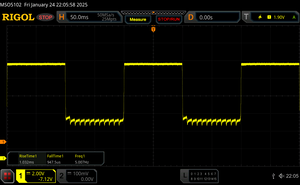
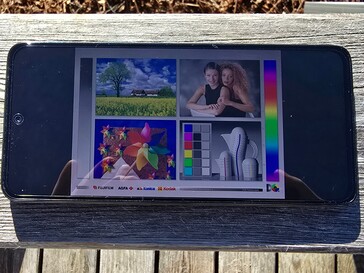
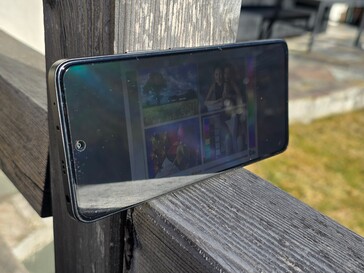
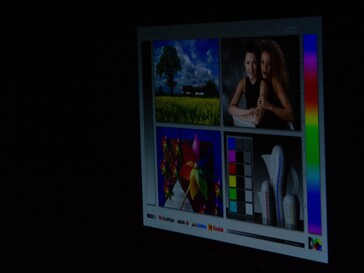
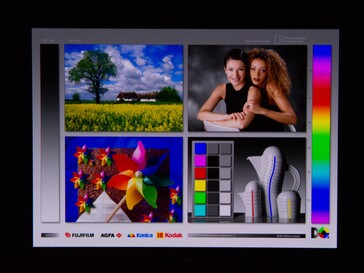
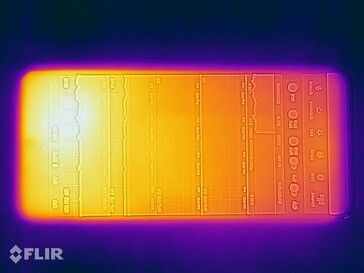
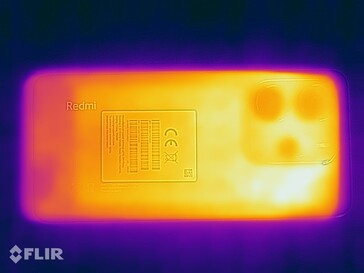
 Total Sustainability Score:
Total Sustainability Score: 